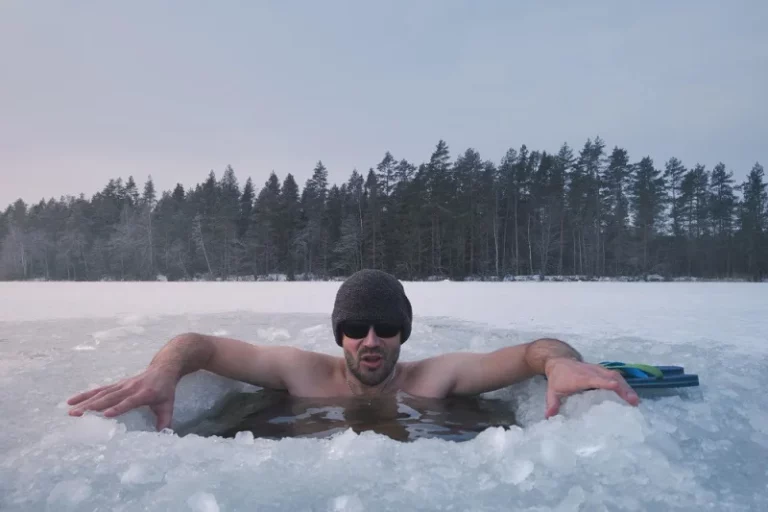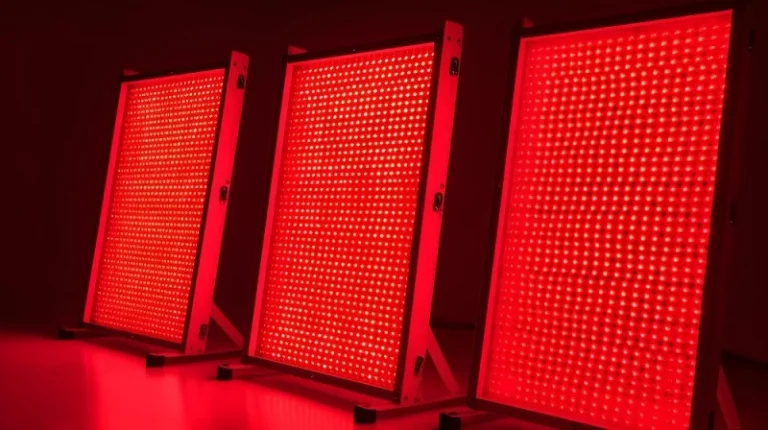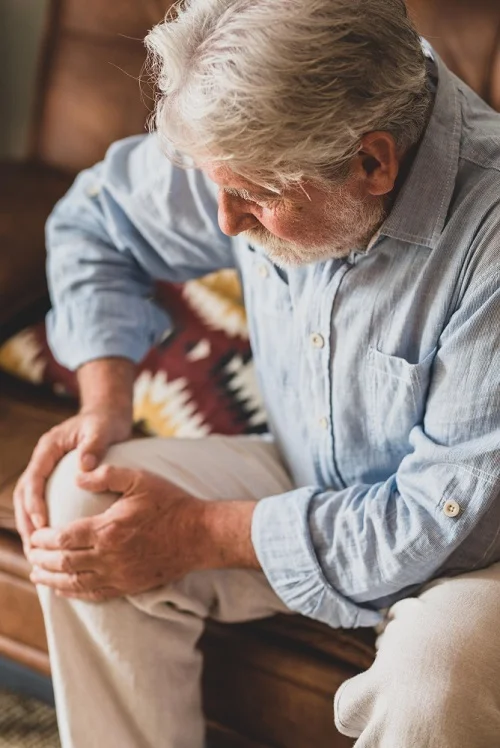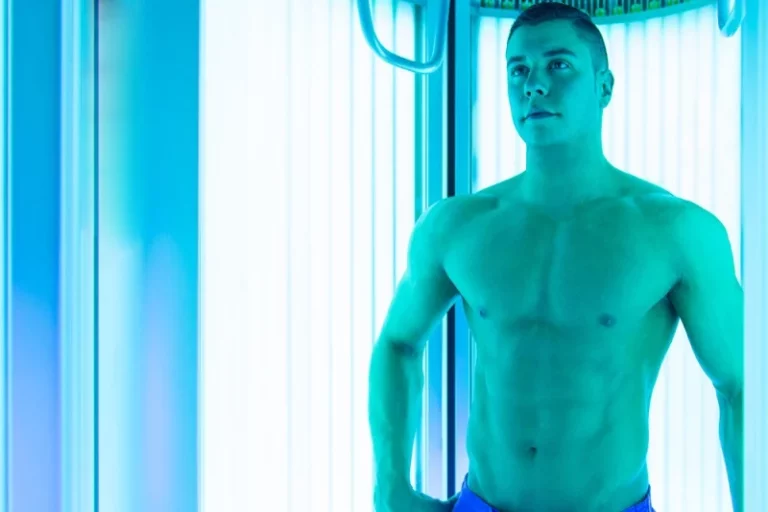Kids and Cryotherapy: What Are Its Healing Effects 2023
Did you know that freezing temperatures can bring surprising benefits to young children? Cryotherapy, a cutting-edge intervention in pediatric care, is gaining recognition for its safe and practical approach. By exposing children to extreme cold temperatures for short periods, cryotherapy offers a range of advantages. It helps regulate the body’s temperature, reduces inflammation, and even alleviates preintervention anxiety. This innovative treatment can effectively manage childhood ailments such as muscle soreness, joint pain, or post-exercise fatigue. With cryotherapy’s increasing popularity among parents and healthcare professionals alike, it is important to understand how it works and the potential benefits it holds for preschool children.
At first glance, subjecting a child to freezing temperatures may seem counterintuitive. However, when used appropriately under medical supervision, cryotherapy has proven safe and beneficial. By embracing this novel approach to pediatric care, we can unlock new possibilities in promoting children’s health and happiness.
Benefits of Cryotherapy in Preventing Mucositis
Cryotherapy, a treatment that involves extreme cold temperatures, has shown promising results in preventing mucositis – a common side effect experienced by individuals undergoing cancer treatment. This innovative approach reduces the risk of developing mucositis, enhances oral health, and minimizes discomfort and complications associated with this condition.
Reducing the Risk of Mucositis through Cryotherapy
Mucositis, characterized by painful inflammation and ulceration of the mucous membranes lining the digestive tract, is often triggered by chemotherapy or radiation therapy. However, cryotherapy has emerged as an effective preventive measure. By exposing the oral cavity to extremely cold temperatures using specialized devices, cryotherapy constricts blood vessels and reduces blood flow to the area. As a result, it helps to decrease inflammation and mitigate damage to the delicate mucous membranes.
Enhancing Oral Health during Cancer Treatment with Cryotherapy
One of the major advantages of cryotherapy is its ability to enhance oral health during cancer treatment. Mucositis can cause severe pain and discomfort, making it difficult for patients to maintain proper oral hygiene. This can further lead to infections and other complications. However, cryotherapy promotes healing by reducing inflammation and increasing blood circulation in the affected areas. By doing so, it aids in preserving oral health throughout cancer treatment.
Moreover, cryotherapy can help prevent secondary infections that may arise due to compromised oral hygiene caused by mucositis. Cold temperatures inhibit bacterial growth and reduce the risk of infection, providing an additional layer of protection for vulnerable patients.
Minimizing Discomfort and Complications Associated with Mucositis Using Cryotherapy
The discomfort caused by mucositis can significantly impact a patient’s quality of life during cancer treatment. Fortunately, cryotherapy offers relief from these debilitating symptoms. By numbing nerve endings in the mouth through its cooling effect, cryotherapy can alleviate pain and reduce the need for strong analgesics.
Furthermore, cryotherapy can minimize complications associated with mucositis. Ulcerations caused by this condition can make it difficult for patients to eat and drink, leading to malnutrition and dehydration. Cryotherapy helps in reducing the severity of ulcers and accelerates the healing process, allowing patients to maintain adequate nutrition throughout their treatment journey.
Kid-Friendly Cryotherapy Methods and Techniques
Cryotherapy, a medical procedure that involves the use of extreme cold temperatures to treat various conditions, is often associated with adults. However, discovering child-appropriate approaches to cryotherapy is crucial for pediatric patients who may require such treatments. By engaging children with fun and interactive cryotherapy techniques, healthcare providers can adapt the methods to suit their needs and preferences.
One common form of cryotherapy for kids is internal cryotherapy. This treatment involves using liquid nitrogen to freeze and destroy abnormal tissue inside the body. Although it may sound intimidating, healthcare professionals have developed strategies to make the experience more comfortable for young patients. For instance, distraction techniques such as playing music or watching videos can help alleviate preprocedural anxiety levels in children. Caregivers play a vital role in providing emotional support and reassurance throughout the process.
To ensure a positive experience during cryotherapy procedures, healthcare providers consider several factors. Firstly, pain management is crucial. Pediatric patients may be more sensitive to pain than adults, so employing measures like numbing creams or local anesthesia can minimize discomfort during the intervention phases. Moreover, using smaller needles or alternative methods like cold sprays can reduce pain perception among children.
Another critical aspect of kid-friendly cryotherapy is minimizing restraint whenever possible. Restraining a child during a medical procedure can cause distress and increase anxiety. Healthcare professionals aim to create an environment where children feel safe and at ease by allowing them some control over their surroundings. For example, letting them choose their favorite color for an armrest or offering options for positioning during the procedure can empower them and enhance their overall experience.
In addition to adapting physical aspects of cryotherapy procedures for kids, addressing their emotional well-being plays a significant role in ensuring successful outcomes. Healthcare providers understand that fear and anxiety are common emotions among pediatric patients undergoing medical treatment or therapy. Therefore, they employ techniques such as age-appropriate explanations, visual aids, and storytelling to help children understand the procedure and alleviate any concerns they may have.
Understanding the Mechanism of Cryotherapy in Children
Cryotherapy, a therapeutic technique involving extreme cold temperatures, has gained popularity recently for its potential benefits in various medical fields. While it is often associated with athletes and adults seeking muscle recovery or pain relief, cryotherapy can also benefit children.
Unveiling how cryotherapy works specifically for children
Cryotherapy involves exposing the body to extremely low temperatures, typically ranging from -200°F to -300°F (-129°C to -184°C), for a short period. The sudden exposure to such cold temperatures triggers a series of reactions within the body that can be highly beneficial for children.
Explaining the science behind cryotherapy’s effectiveness in pediatric patients
One key mechanism behind cryotherapy’s effectiveness is its ability to constrict blood vessels. When exposed to extreme cold, blood vessels near the skin’s surface rapidly narrow through vasoconstriction. This constriction helps reduce inflammation and swelling in affected areas, relieving discomfort caused by injuries or chronic conditions commonly experienced by children.
Moreover, cryotherapy stimulates the release of endorphins – natural pain-relieving chemicals produced by our bodies. These endorphins not only help alleviate physical pain but also promote a sense of well-being and relaxation in pediatric patients.
Highlighting the physiological changes induced by cryotherapy in kids
Beyond its immediate effects on blood vessels and pain perception, cryotherapy induces several other physiological changes that are particularly beneficial for children. For instance:
- Reduced muscle soreness: Cryotherapy aids in minimizing muscle soreness after intense physical activities or sports-related injuries commonly encountered during childhood.
- Enhanced immune function: Exposure to extreme cold temperatures activates and strengthens the immune system, making children more resilient to infections and illnesses.
- Improved sleep patterns: Cryotherapy has been found to promote better sleep quality in children by regulating the release of hormones responsible for sleep regulation.
- Accelerated healing: The cold temperatures stimulate blood flow and oxygen delivery to injured tissues, promoting faster healing and recovery.
When to Seek Medical Attention: Signs to Watch for after Cryotherapy
Cryotherapy is a widely used treatment for various skin conditions in children and adults. While it is generally considered safe, there are instances where complications may arise after undergoing cryo-therapeutic procedures. It is important for parents and caregivers to be aware of the warning signs that indicate the need for medical attention post-cryotherapy, ensuring timely intervention and proper care.
Recognizing potential complications following cryo-therapeutic procedures
After cryotherapy, monitoring the treated area for any unusual reactions or complications is crucial. While most individuals experience mild side effects such as redness, swelling, or blistering immediately after the procedure, certain symptoms may indicate a more serious issue. These potential complications can include:
- Excessive pain: Some discomfort or mild pain is expected after cryotherapy. However, if your child experiences severe or worsening pain that does not subside with over-the-counter pain relievers, it could indicate an underlying problem.
- Excessive bleeding: While minor bleeding or oozing is common initially, persistent or heavy bleeding should raise concerns and prompt medical attention.
- Infection: Although rare, infections can occur post-cryotherapy if proper hygiene measures are not followed. Look out for signs of infection such as increased redness, warmth around the treated area, pus formation, or fever.
Identifying warning signs that require medical attention post-cryotherapy
Apart from potential complications specific to cryotherapy itself, there are general warning signs that should not be ignored after any medical procedure involving abnormal tissue removal:
- Delayed healing: If the treated area fails to show signs of improvement or starts deteriorating instead of healing within a reasonable timeframe (usually a couple of weeks), it may indicate an issue that requires further evaluation by a healthcare professional.
- Recurrence of abnormal cells: Cryotherapy aims to remove abnormal tissue or cells, but in some cases, there may be a recurrence. If you notice the reappearance of abnormal growths or lesions in the treated area, it is important to seek medical attention for further investigation.
- Allergic reactions: While rare, some individuals may develop an allergic reaction to cryotherapy solutions or bandages used during the procedure. If your child experiences symptoms such as hives, itching, swelling, or difficulty breathing after cryotherapy, it is crucial to seek immediate medical help.
Ensuring timely intervention by being aware of red flags after undergoing treatment
To ensure timely intervention and appropriate care for your child after cryotherapy, it is essential to be vigilant and responsive to any red flags that arise. Promptly seeking medical attention can prevent potential complications from worsening and aid in a swift recovery.
Remember that every individual’s response to cryotherapy may vary. It is always recommended to follow post-treatment instructions provided by the healthcare professional who performed the procedure. If you have any concerns or doubts regarding your child’s recovery process following cryotherapy, do not hesitate to reach out for medical advice.
By staying informed about potential complications and recognizing warning signs that require medical attention post-cryotherapy, parents can play an active role in ensuring their child’s well-being throughout the healing process.
Making Cryotherapy Fun for Kids: Engaging Activities and Visuals
Cryotherapy for kids can be an intimidating experience, especially when they are already distressed or anxious. To ensure a positive atmosphere during treatments, it is crucial to incorporate enjoyable activities and engaging visuals into the cryotherapeutic session. Using play-based techniques and visual aids, we can transform cryo sessions into a fun and entertaining experience for children.
Incorporating Enjoyable Activities
One way to make cryotherapy more enjoyable for kids is by incorporating fun activities that distract them from the cold temperatures. For instance, allowing children to hold cold foods such as ice cream or frozen fruit cubes during the treatment can provide a sensory distraction. Not only does this engage their senses, but it also helps divert their attention away from any discomfort they may feel.
Introducing games or interactive elements into the cryo session can make the overall experience more enjoyable. For example, creating a countdown game where kids count the minutes together until their session ends can help pass the time more quickly. This keeps them engaged and instills a sense of achievement as they reach each milestone.
Utilizing Visual Aids
Visual aids play a significant role in capturing children’s attention and enhancing their engagement during cryotherapy sessions. By using colorful posters or charts that explain the process in child-friendly language, we can help them understand what is happening to their bodies during each phase of the treatment. This visual representation allows them to visualize how cryotherapy works on a cellular level while making it easier to comprehend.
Another effective visual aid is providing storybooks designed to educate children about cryotherapy. These books use illustrations and simple language to explain the benefits of cryotherapy engagingly. Reading these books with kids before or during their sessions helps create familiarity with the process and reduces any anxiety they may have.
Play-Based Techniques
Incorporating play-based techniques into cryotherapy sessions can help create a positive and comfortable environment for kids. For example, using child-friendly equipment such as special gloves or capes to keep them warm during the treatment can make them feel more at ease. These playful accessories serve a practical purpose and add fun to the experience.
Furthermore, engaging kids in interactive activities during the session, such as blowing bubbles or playing with sensory toys, can help distract them from any discomfort they may feel. These activities provide children a sense of control and empowerment while diverting their attention from the cold temperatures.
Age Recommendations and Safety Considerations for Cryotherapy in Children
Determining appropriate age ranges for different types of pediatric cryotherapies.
One of the key factors to consider is the appropriate age range for different types of treatments. While cryotherapy has gained popularity as a therapeutic option for various conditions in adults, its use in children requires careful consideration.
Pediatric cryotherapies can encompass a range of treatments, including whole-body cryotherapy (WBC), local cryotherapy (LC), and cold packs or ice baths. The suitability of each treatment method may vary depending on the child’s age and specific needs.
For younger children, such as toddlers and preschoolers, cold packs or ice baths may be more suitable due to their simplicity and ease of application. These methods involve applying a cold compress or immersing a specific body part in icy water to provide localized cooling. They commonly alleviate minor injuries, reduce swelling, or soothe muscle soreness after physical activities.
As children grow older, WBC and LC become viable options. Whole-body cryotherapy involves exposing the entire body to extremely low temperatures for a short duration. Athletes often use it to aid muscle recovery and enhance performance. Local cryotherapy targets specific areas of the body with focused cooling using devices like CryoCuffs or CryoSticks.
Safeguarding children’s well-being through adherence to safety guidelines during treatments
Ensuring the safety of children undergoing cryotherapy is paramount. Parents should be aware of the safety guidelines provided by healthcare professionals before considering any form of pediatric cryotherapy.
Firstly, it is crucial to consult with a qualified healthcare provider who has experience with pediatric cryotherapies. They can assess whether the treatment is appropriate for the child’s condition and guide dosage and frequency.
Parents should closely monitor their children during the treatment session. Although rare, adverse reactions such as skin burns or frostbite can occur if the temperature is not regulated correctly. Monitoring the child’s comfort level and any signs of distress or discomfort is essential.
Educating parents on age-specific considerations when opting for pediatric cryotherapies
When considering cryotherapy for their children, parents should be educated on age-specific considerations to make informed decisions about their child’s well-being.
For younger children, it is essential to consider their ability to communicate any discomfort or adverse effects during the treatment. Parents should closely observe their child’s reactions and ensure they feel at ease.
As children get older, they may have a better understanding of the treatment and its potential benefits. Engaging in an open conversation with older children about cryotherapy can help address any concerns or fears they may have. It is also essential to explain that cryotherapy should never be performed without proper supervision and guidance from healthcare professionals.
Conclusion
In conclusion, cryotherapy can have a positive impact on kids by providing various benefits in preventing mucositis, offering kid-friendly methods and techniques, and engaging activities to make the experience fun.
One of the key advantages of cryotherapy for kids is its effectiveness in preventing mucositis. By using cold temperatures to reduce inflammation and limit blood flow to specific areas, cryotherapy can help minimize the risk of developing this painful condition during cancer treatments.
Moreover, cryotherapy techniques designed specifically for children ensure their comfort and safety. Kid-friendly devices and protocols are used to create a more enjoyable experience, reducing anxiety and fear that may be associated with medical procedures.
Understanding the mechanism behind cryotherapy in children is crucial for parents and healthcare providers. Cryotherapy numbs nerve endings and reduces pain sensations by cooling the skin’s surface. This makes it a practical option for managing discomfort or swelling caused by injuries or certain medical conditions.
While cryotherapy can be beneficial, it’s important to know when to seek medical attention after a session. Monitoring any adverse reactions or unusual symptoms is essential. If your child experiences severe pain, excessive redness, blistering, or any other concerning signs following cryotherapy, it’s advisable to consult a healthcare professional promptly.
To make cryotherapy more enjoyable for kids, engaging activities and visuals can be incorporated into the sessions. Whether it’s watching their favorite TV show during treatment or playing interactive games on a tablet device, these distractions can help divert their attention from any potential discomfort.
When considering cryotherapy for children, age recommendations and safety considerations should be taken into account. Each child is unique, so discussing with a healthcare professional whether they are suitable candidates for this therapy is essential to ensure their well-being.
In summary, cryotherapy offers numerous benefits for kids by preventing mucositis, utilizing kid-friendly methods and techniques, and providing engaging activities. However, it’s crucial to monitor any adverse reactions and seek medical attention if necessary. By considering age recommendations and safety precautions, cryotherapy can be a safe and effective option for children.
FAQs
Is cryotherapy painful for kids?
Cryotherapy is generally well-tolerated by children, as it numbs the nerve endings and reduces pain sensations. However, individual experiences may vary.
Can cryotherapy help with sports injuries in kids?
Yes, cryotherapy can be beneficial for managing swelling and discomfort caused by sports injuries in children. It helps reduce inflammation and promotes faster recovery.
Are there any risks associated with cryotherapy for kids?
While cryotherapy is generally considered safe for children, there are some risks involved, such as frostbite or skin burns if not properly administered. It’s important to follow proper protocols and consult a healthcare professional before undergoing treatment.
How long does a typical cryotherapy session last for kids?
The duration of a cryotherapy session for kids may vary depending on the specific condition being treated. It can range from a few minutes to around fifteen minutes.





